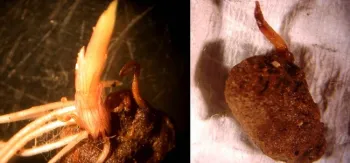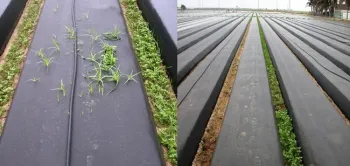You may have heard about ASD (anaerobic soil disinfestation) as ‘biological alternative to soil fumigation'. This is the practice of adding easily degradable carbon sources to soil and developing anaerobic conditions under plastic mulch in moist soils for 3-5 weeks. Then the aeration is provided by cutting holes in plastic and you are ready to plant. The mechanism of action is a mix various processes: anaerobiosis itself, reduction in pH, development of volatile compounds, changes in microbiology and physical properties of soil and, of course, substantial increase in nitrogen that usually comes along with the incorporated carbon sources. The end result is pathogen suppression, big yield improvements compared to untreated soil and rapid adoption by organic growers. But what about the weeds?
In 2007 we took a look at ASD with 9 t of rice bran/acre under clear plastic mulch in a very weedy site, something that even bravest organic growers would discourage. Anaerobic conditions developed well as expected and we saw a lot fewer weeds compared to untreated plots. In fact during three weeding operations (pulling weeds from under plastic via small planting holes, which requires flexible wrists) we had 55%, 68% and 90% fewer broadleaf weeds in ASD plots and we spent a lot less time weeding them compared to untreated checks. Last year we used opaque mulch and after ASD saw >90% reduction in weed number in planting holes where competition with crop is most critical. The weeds that remained in ASD plots were field bindweed (not a surprise) and those with wind dispersed seed (annual sowthistle and common groundsel) suggesting that this technology was effective against annual broadleaf weeds germinating from soil seed bank.


